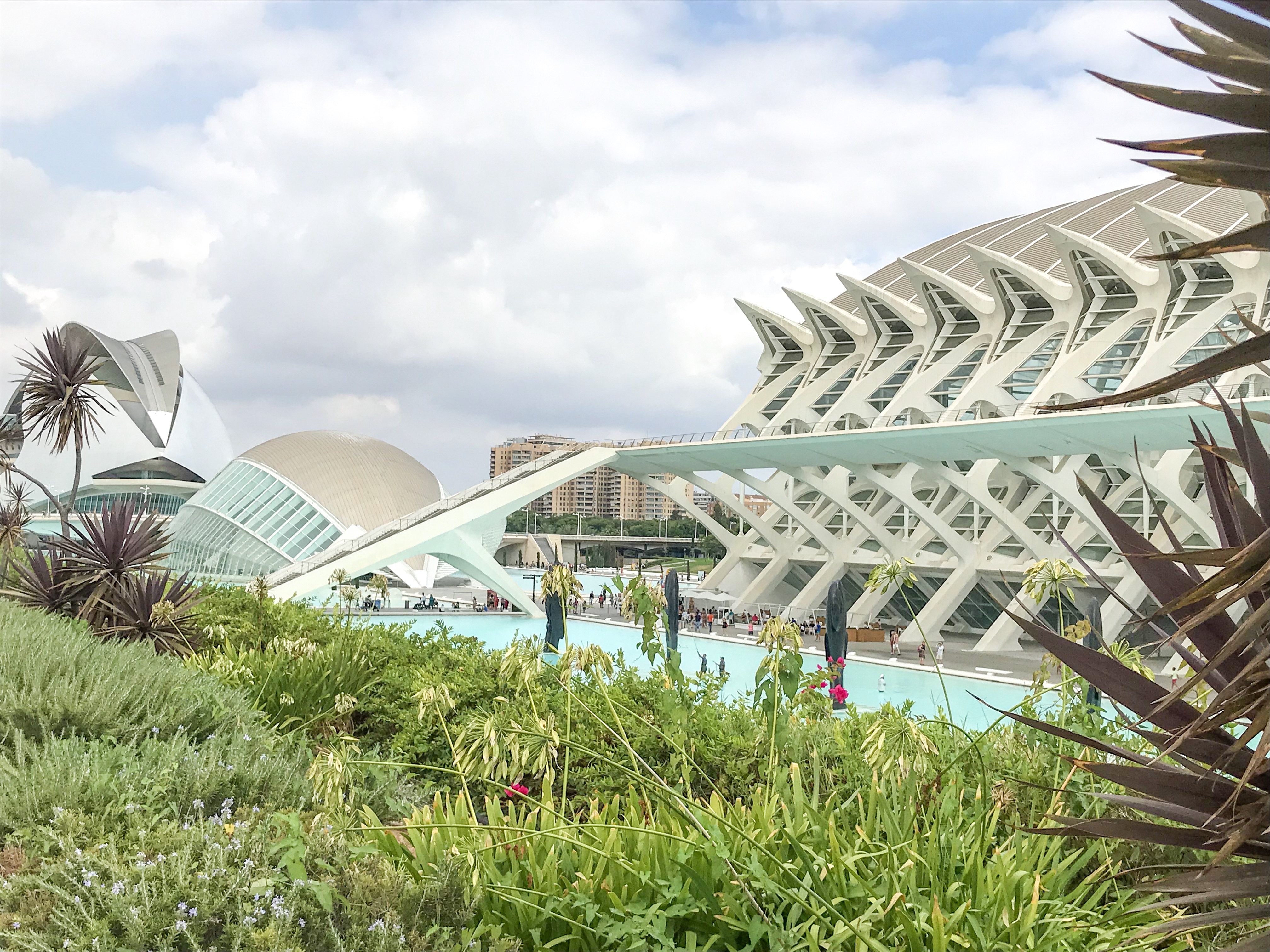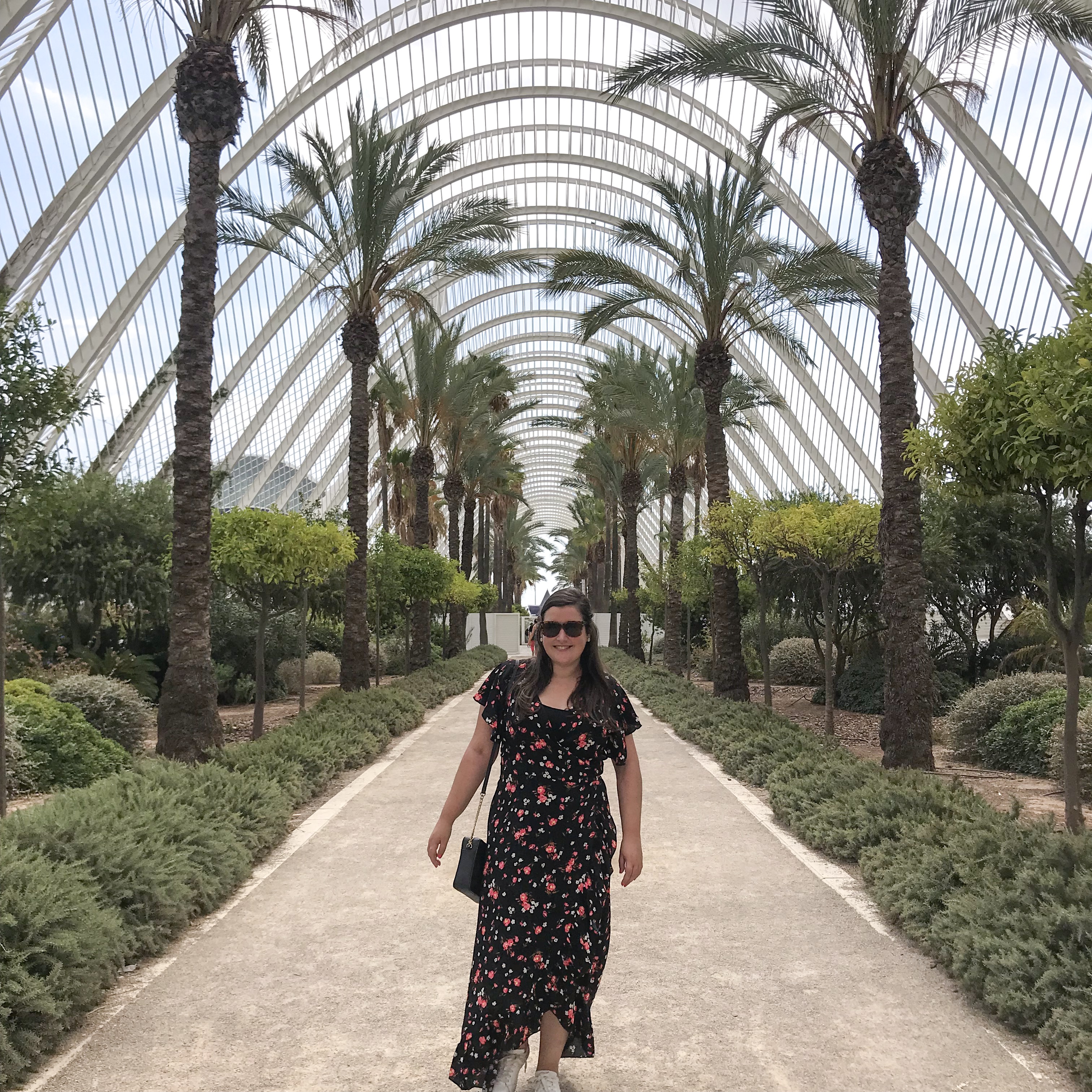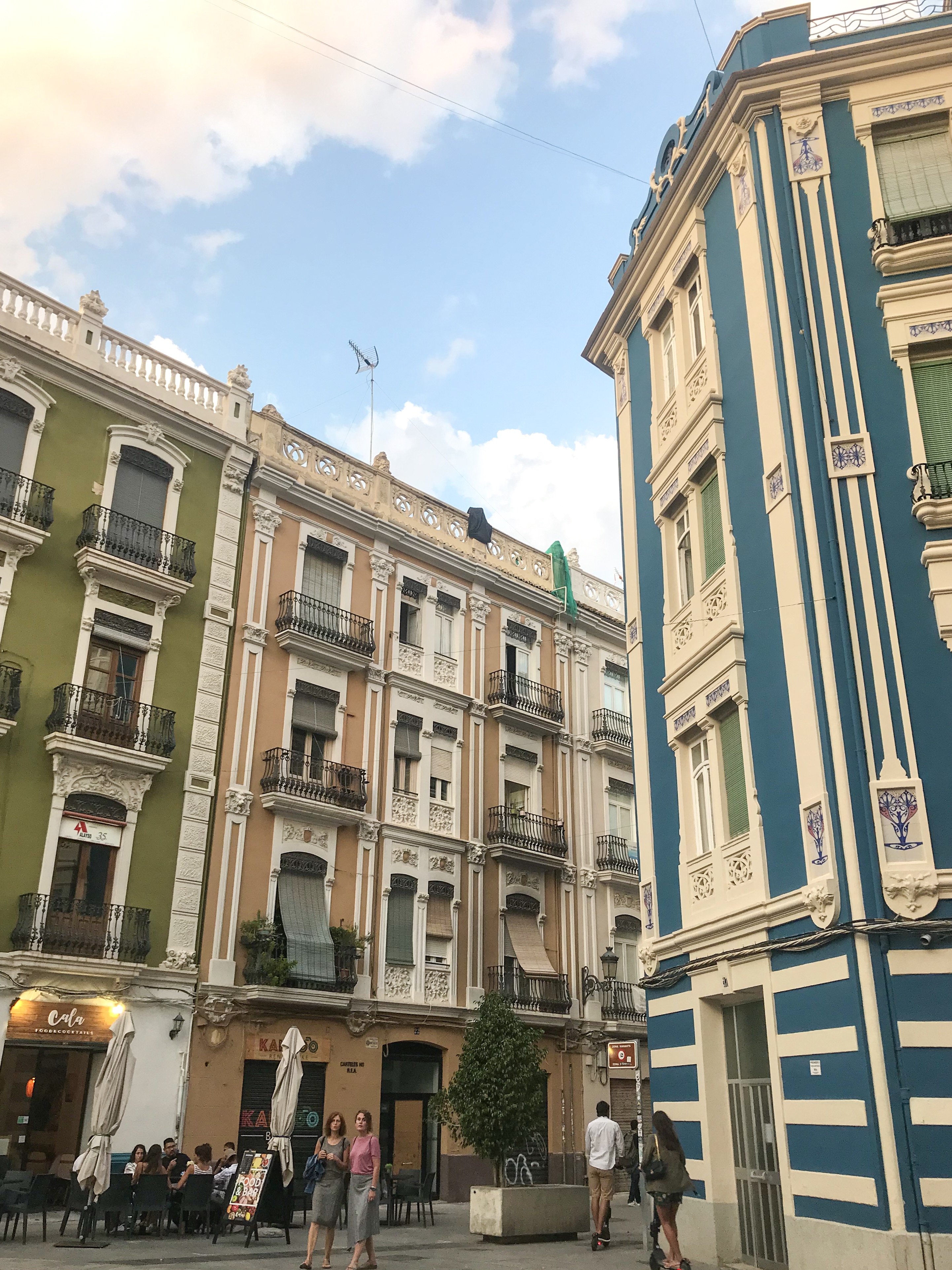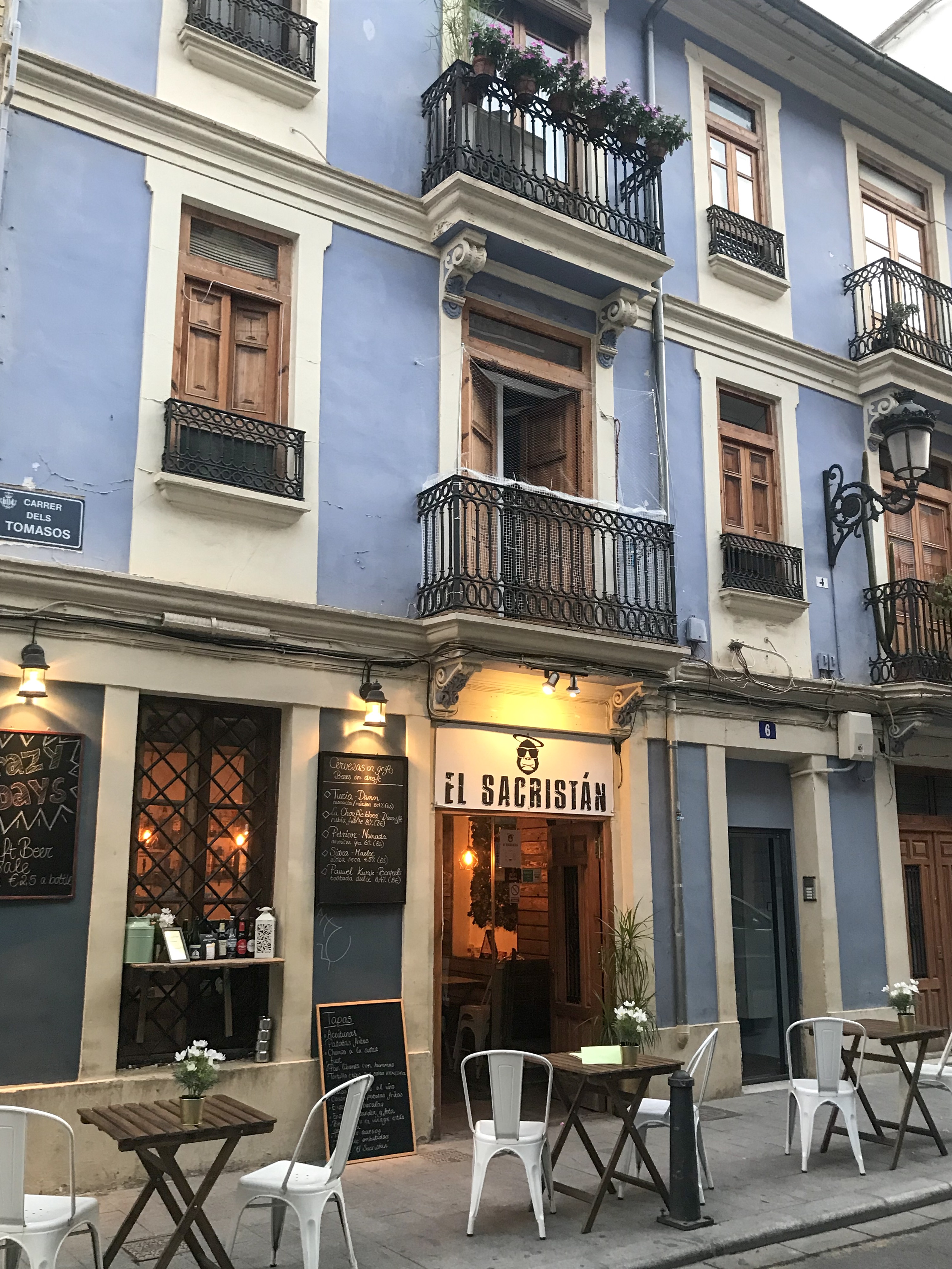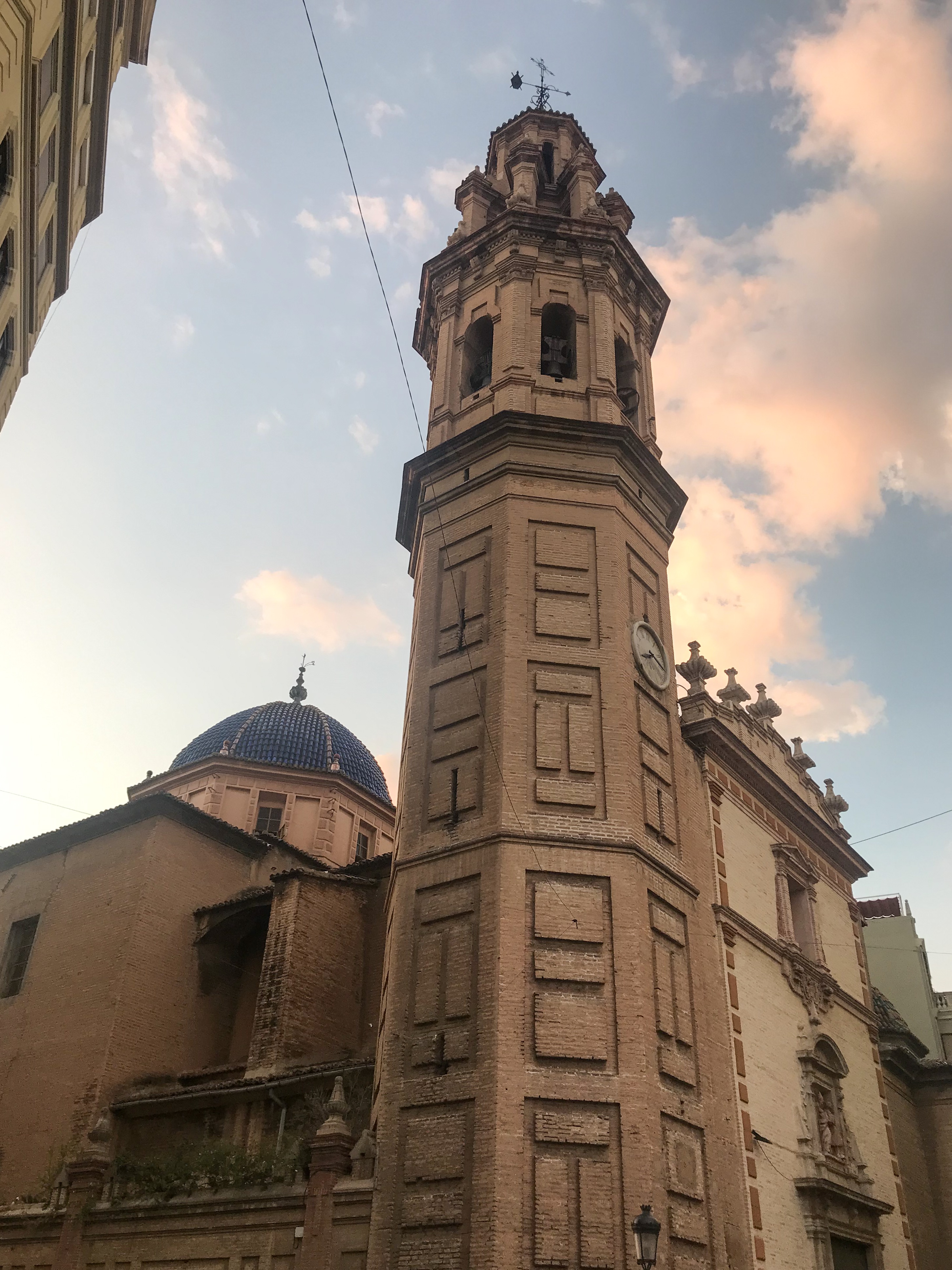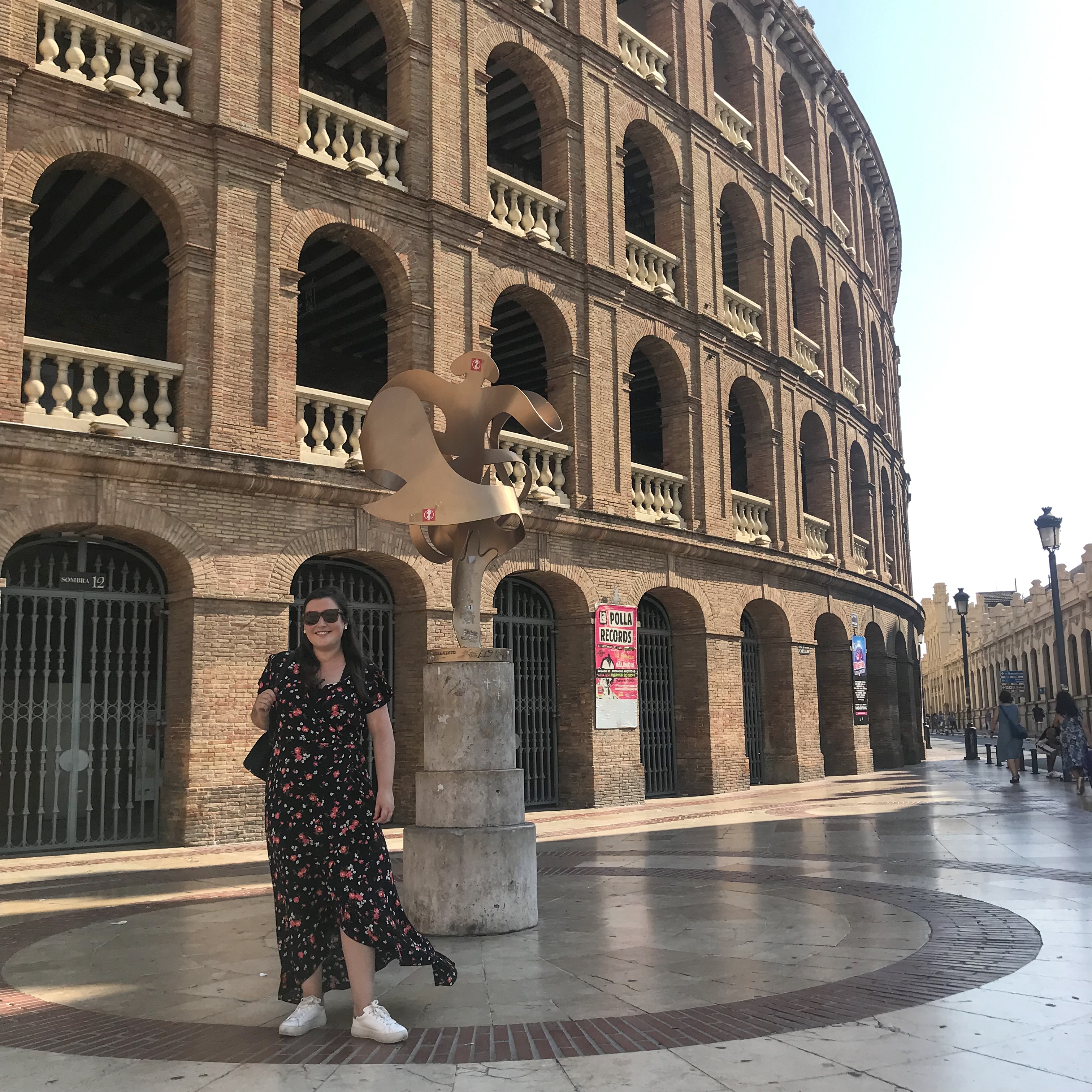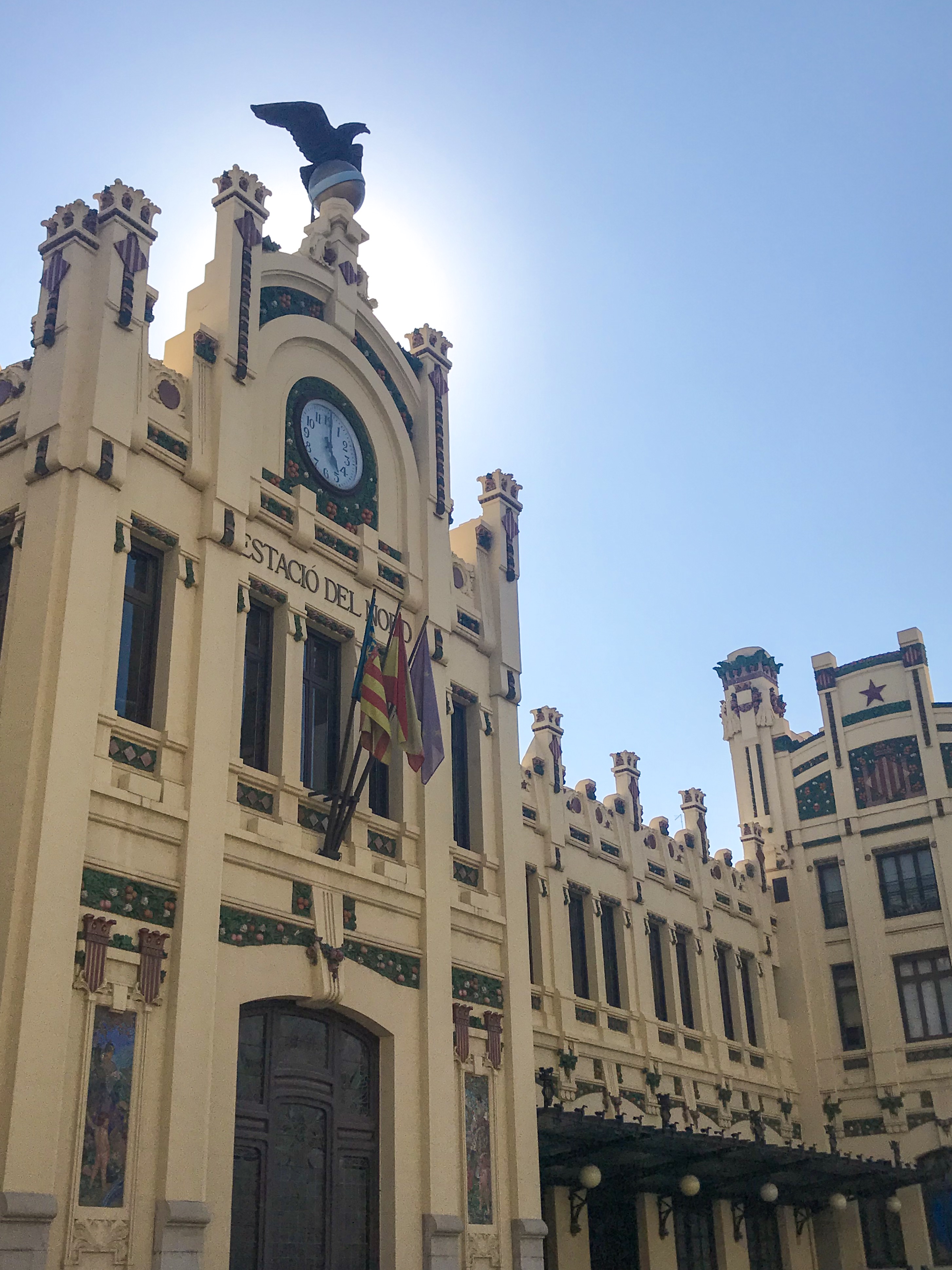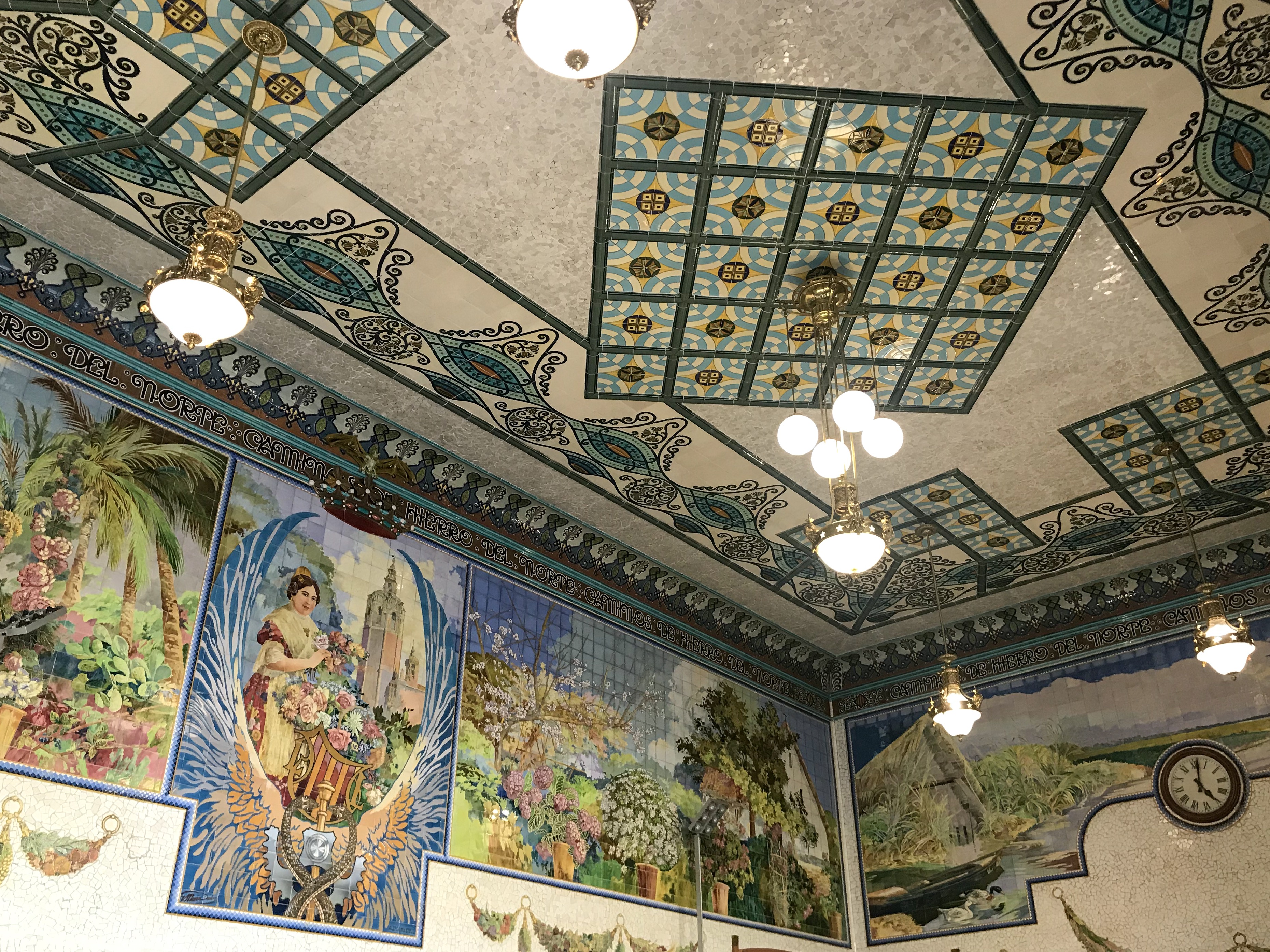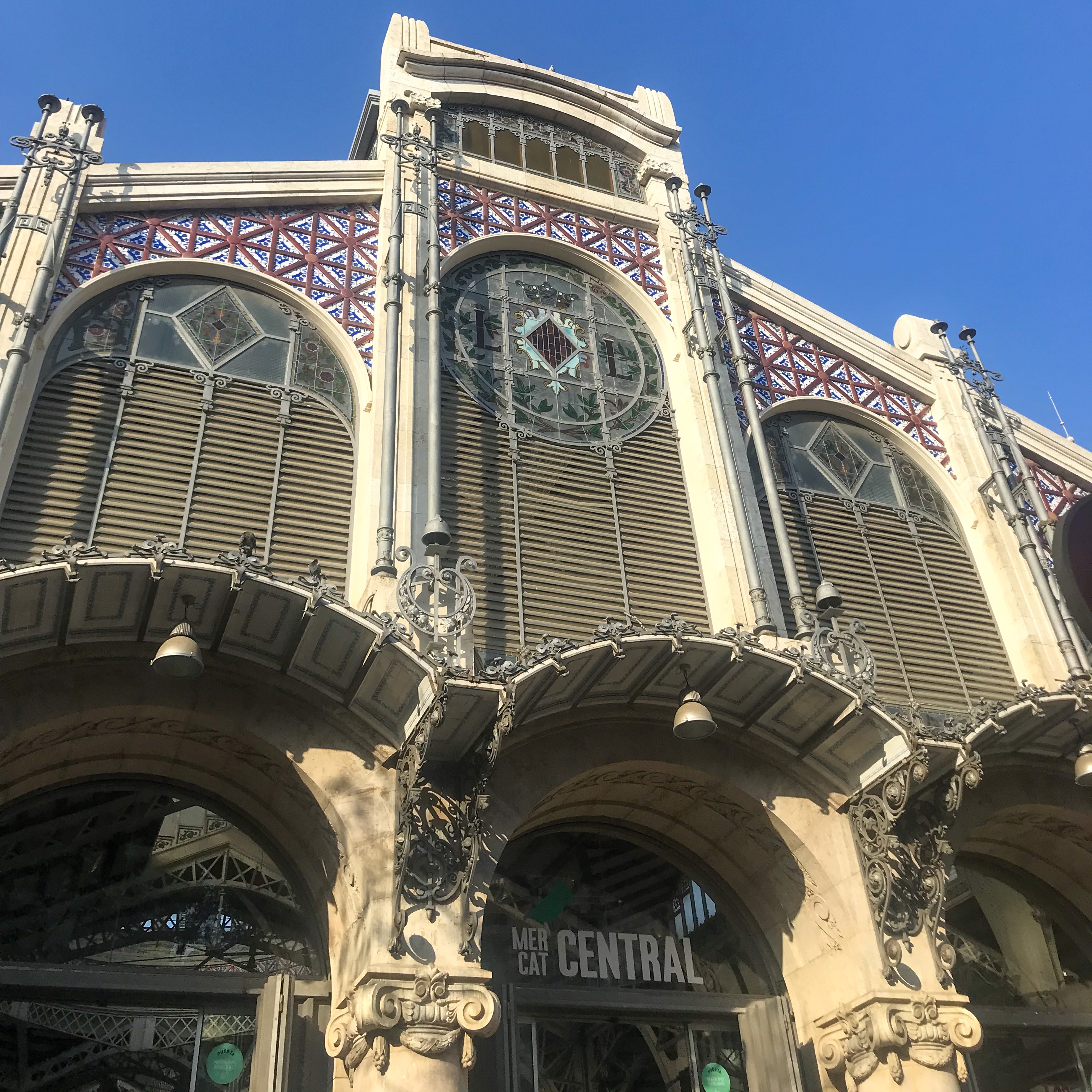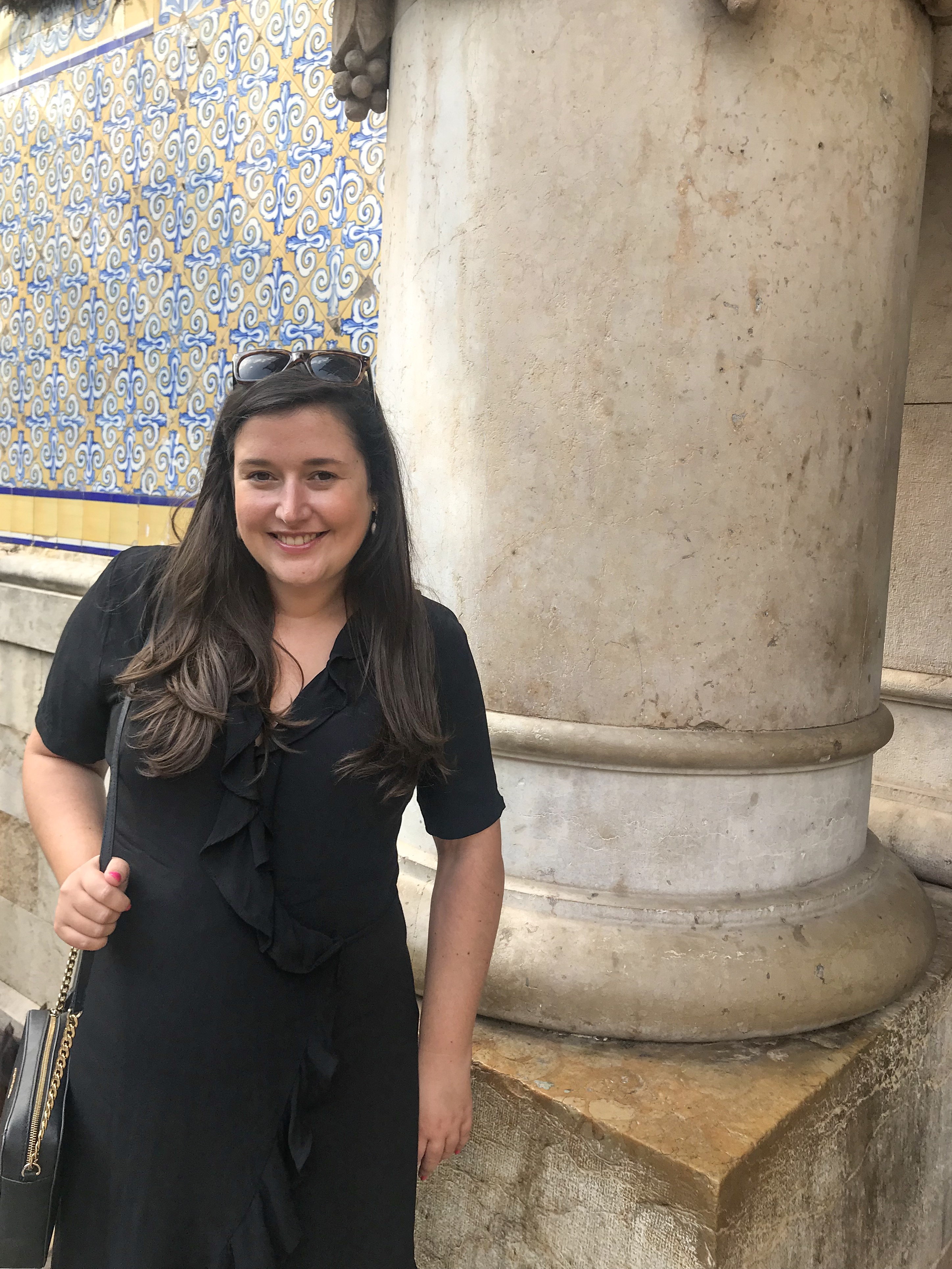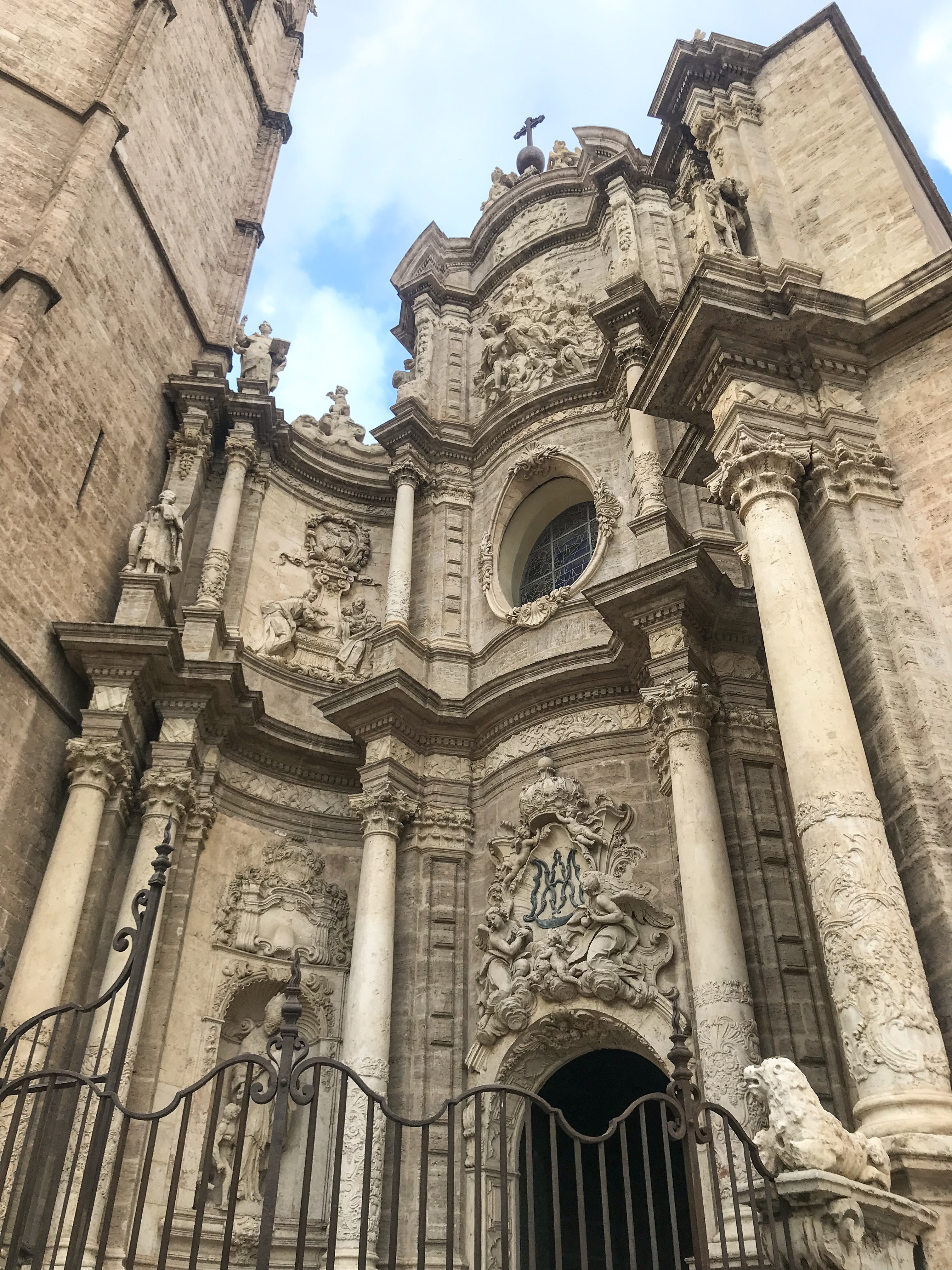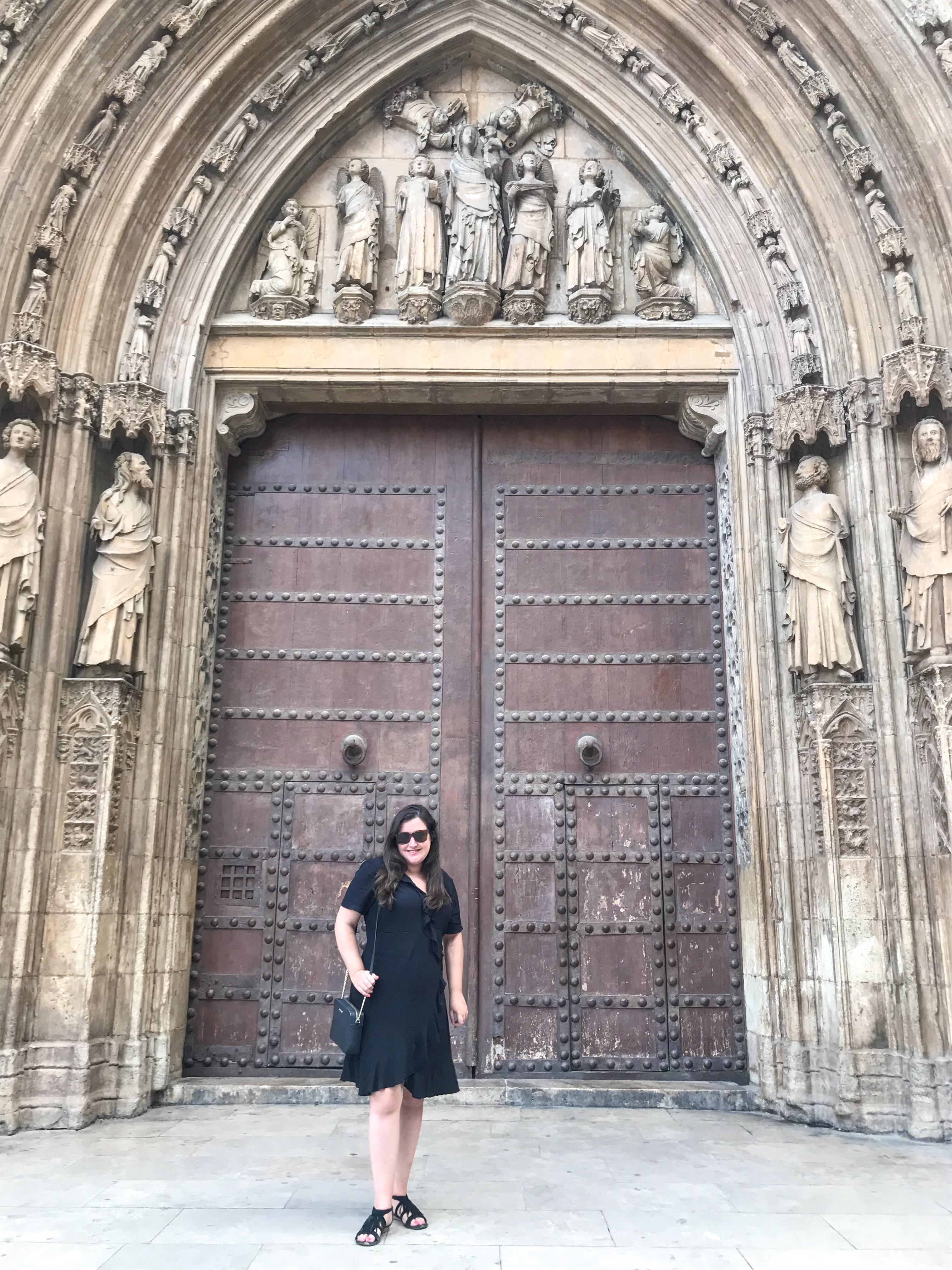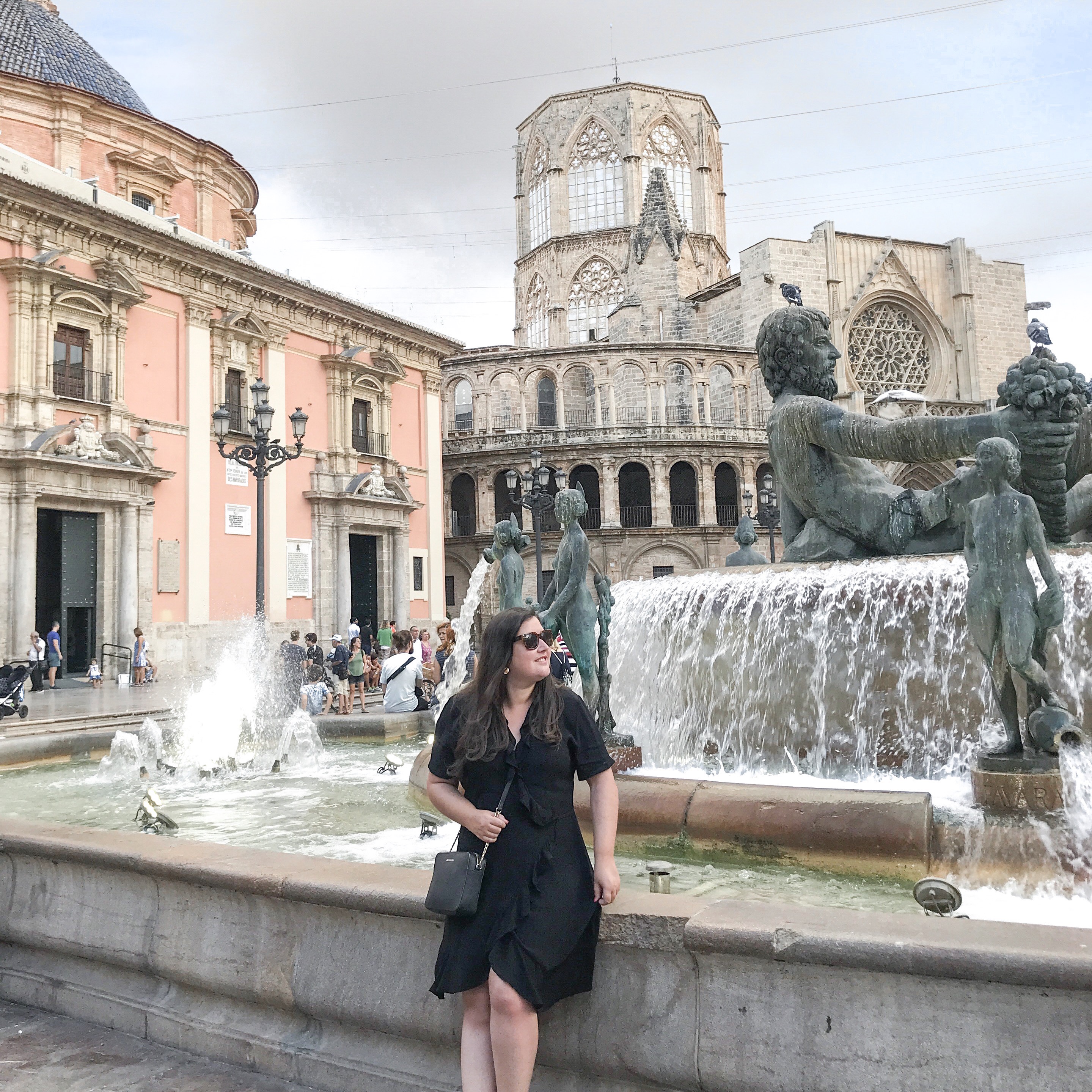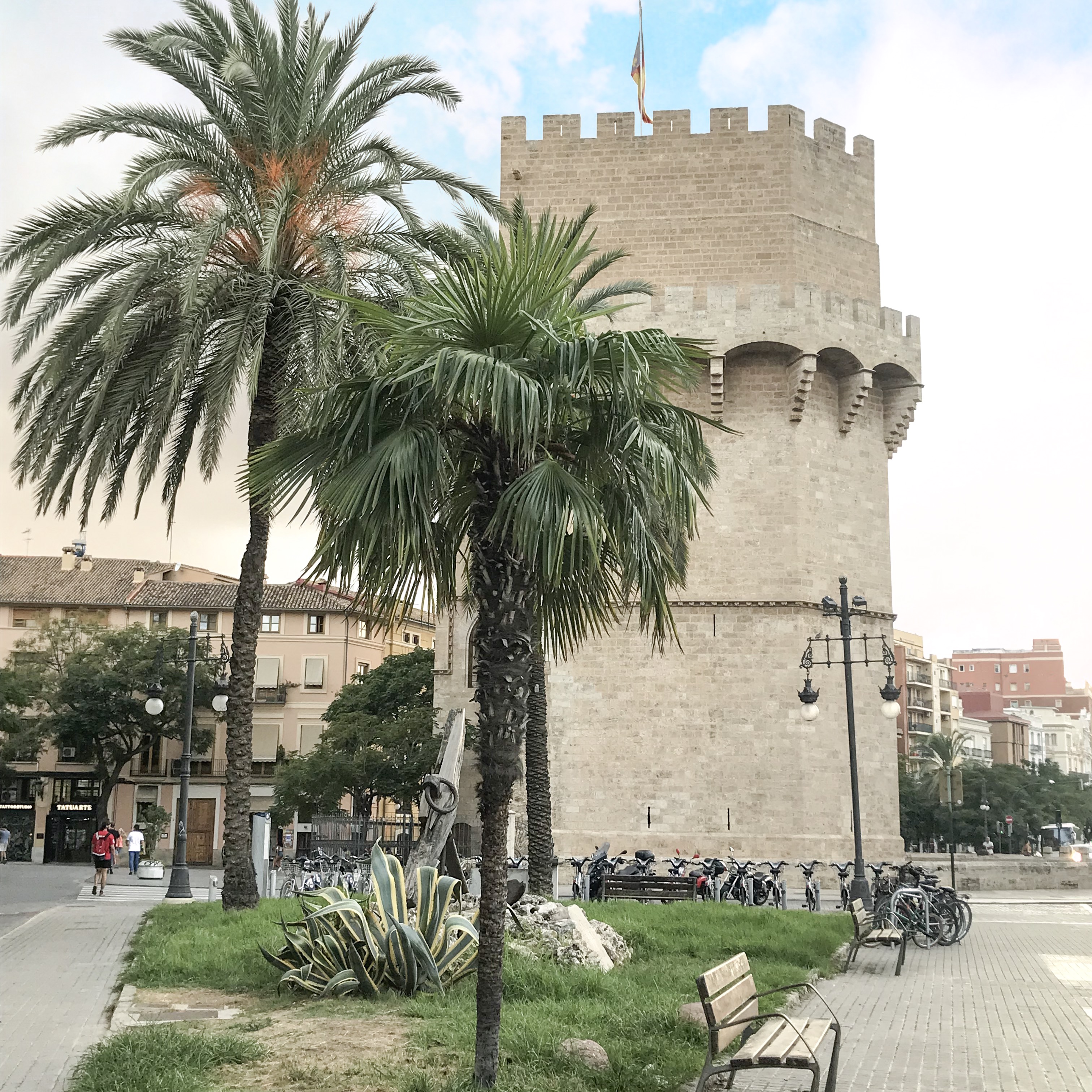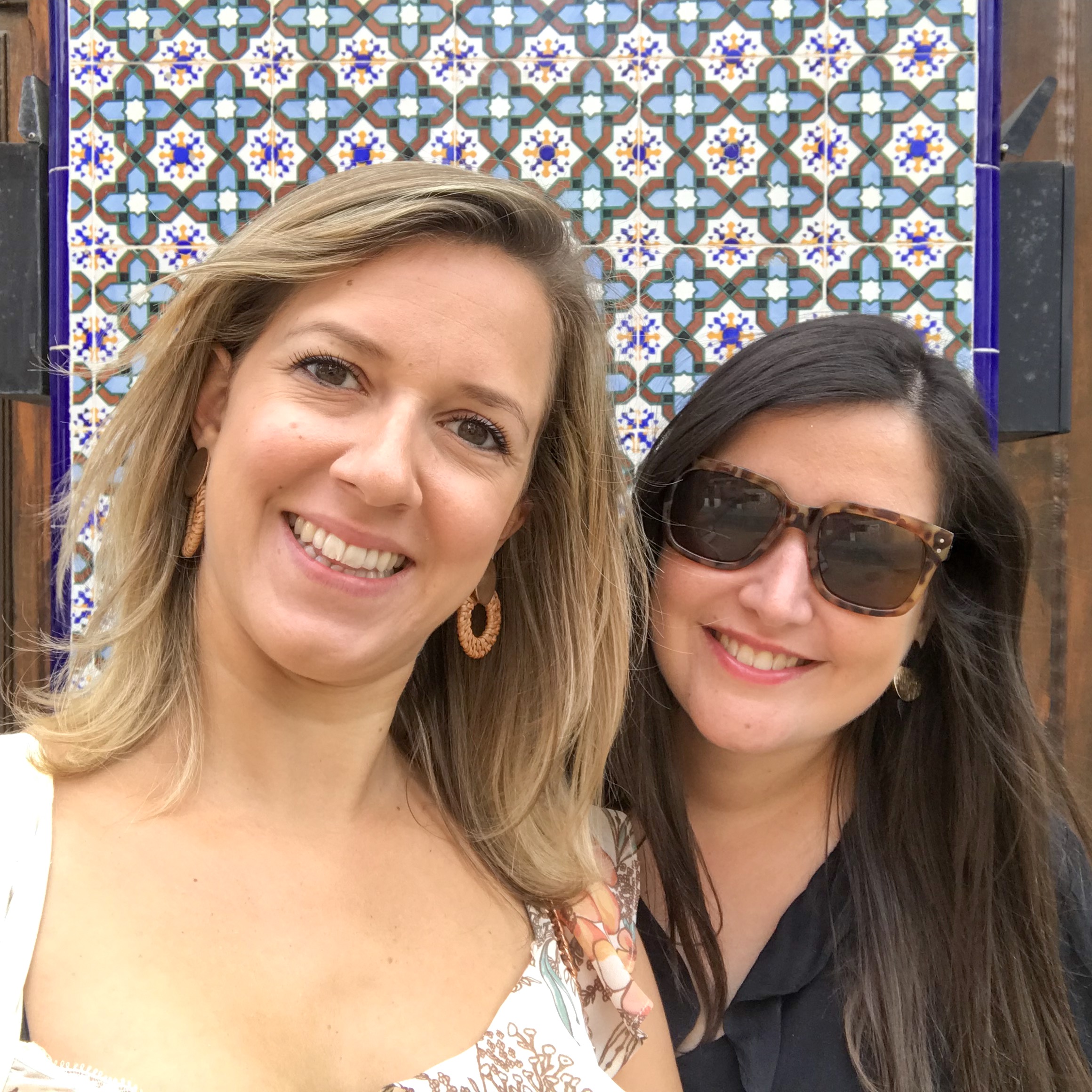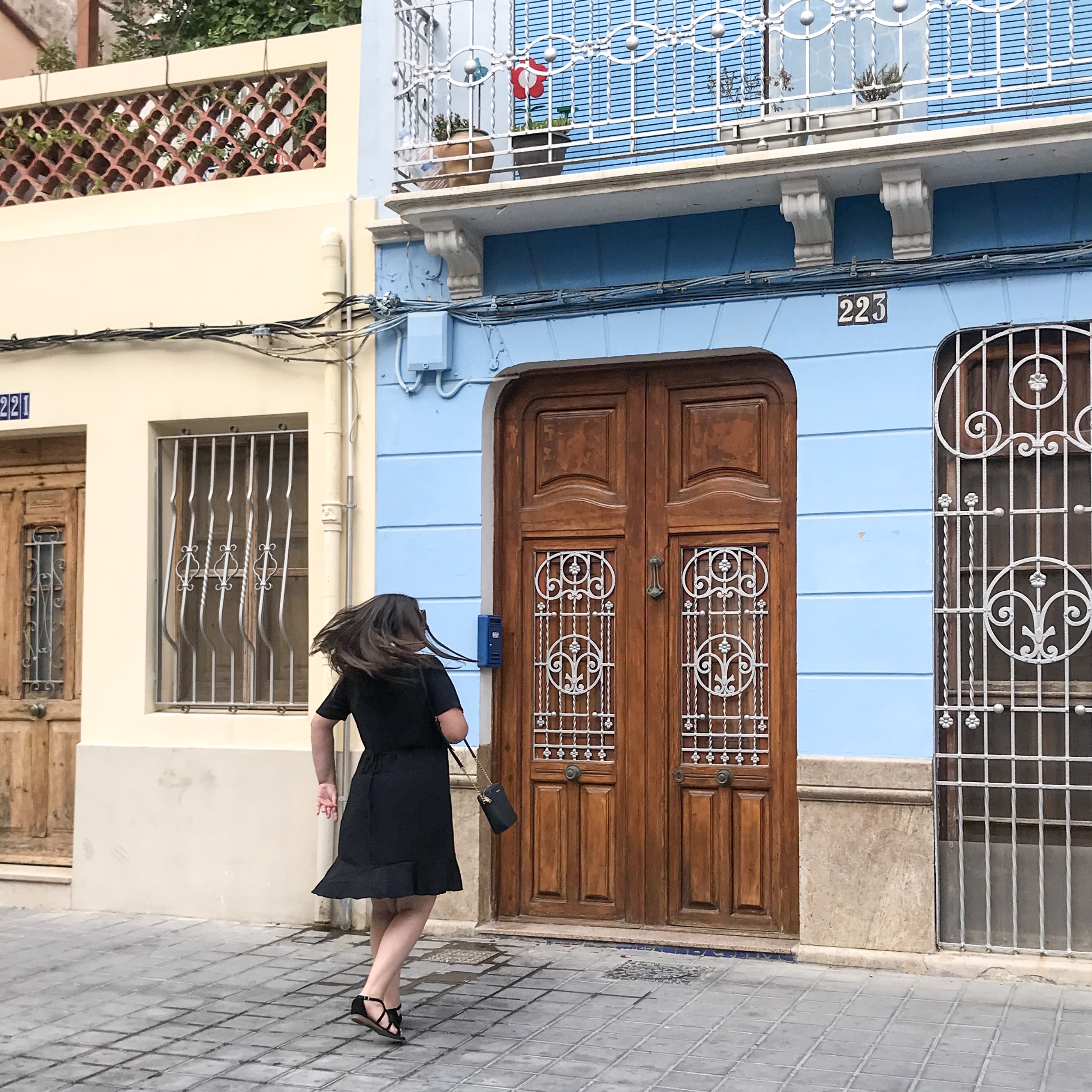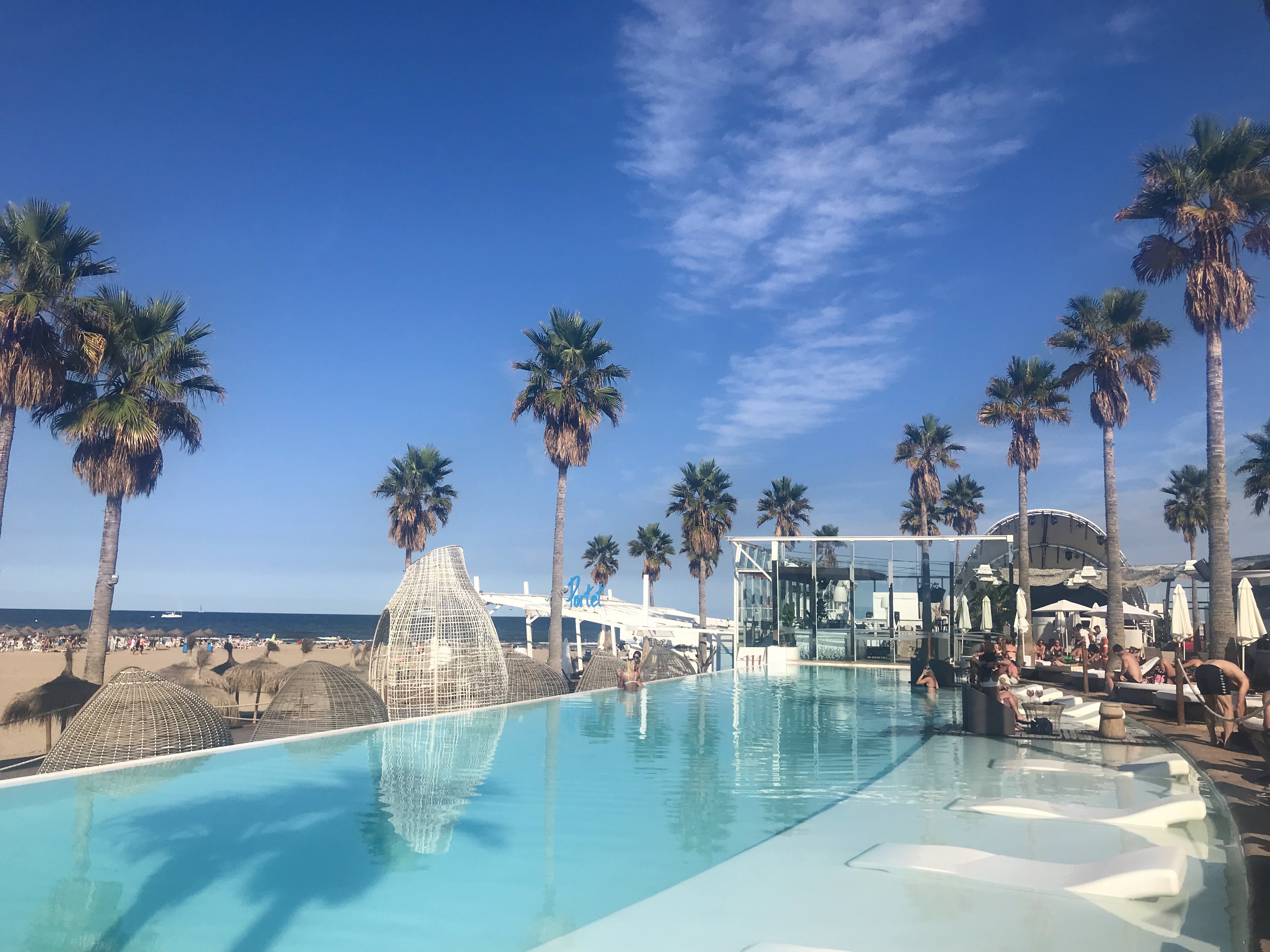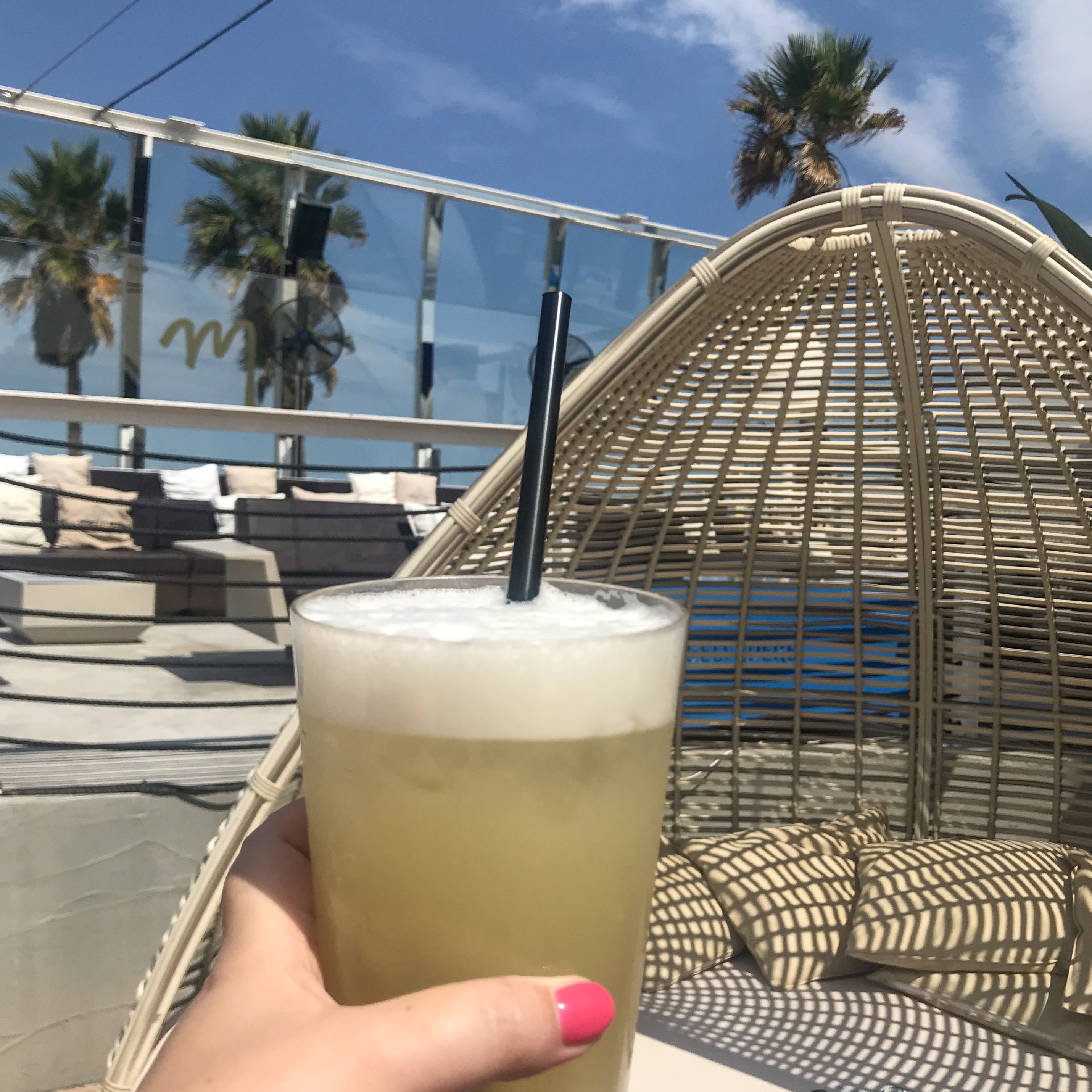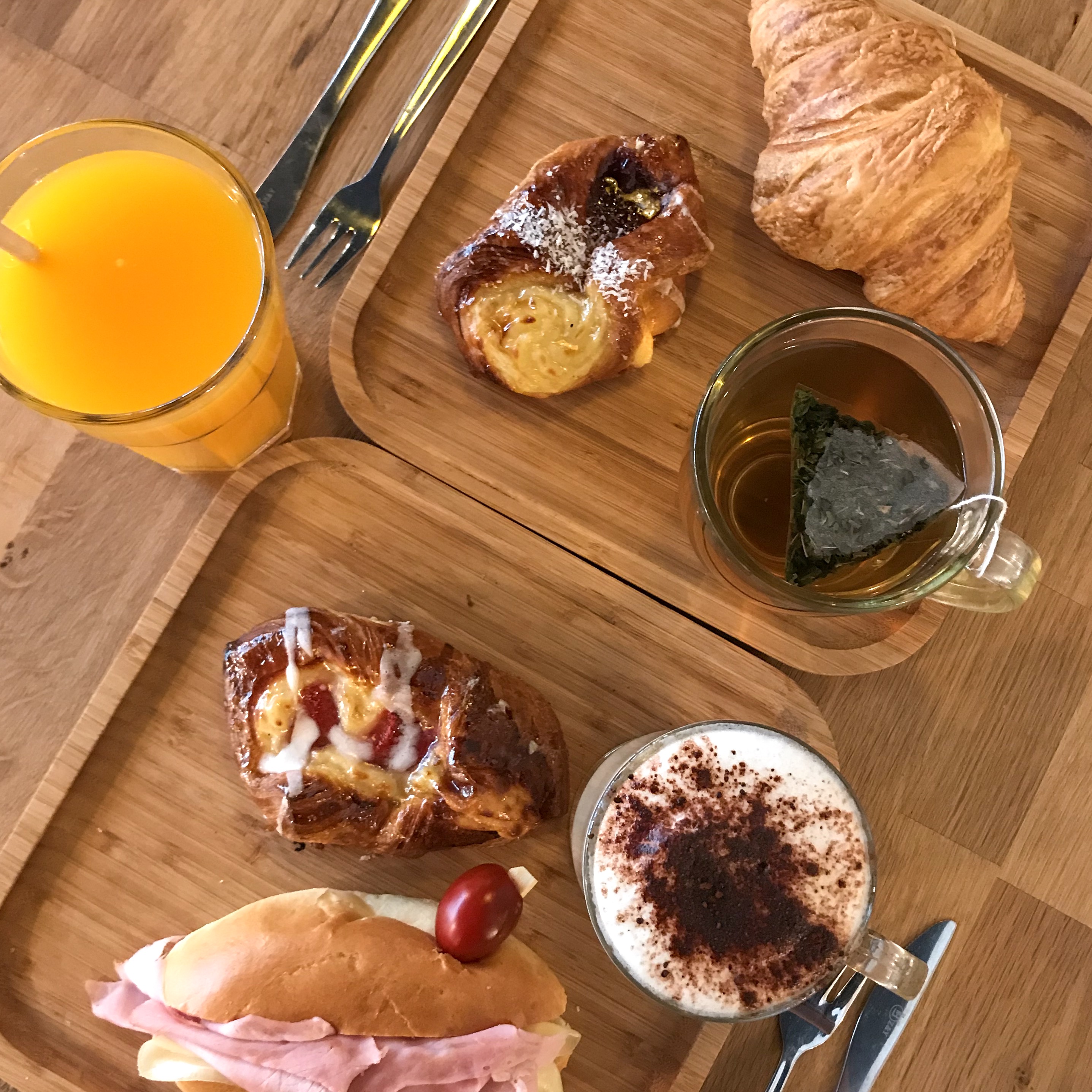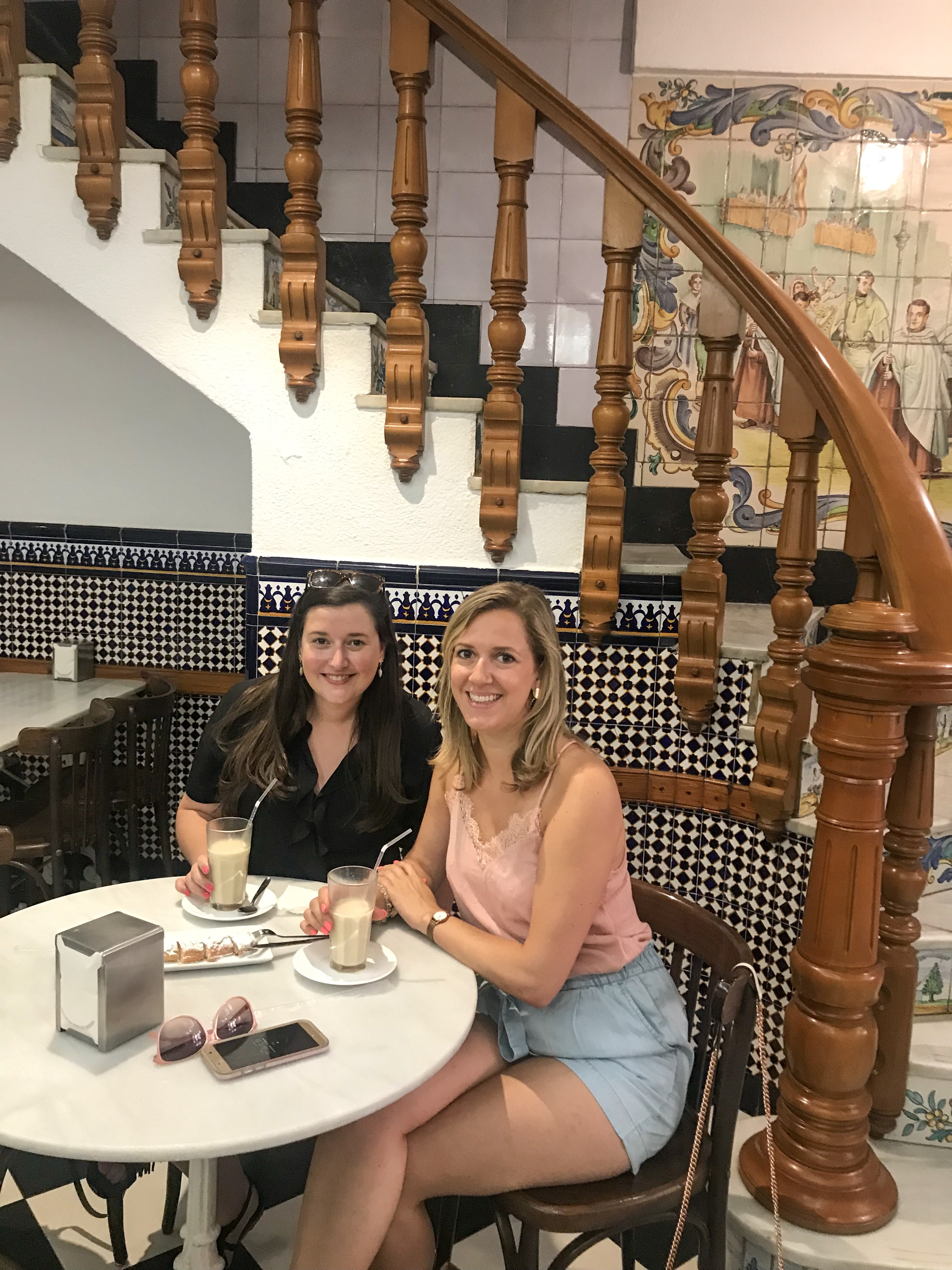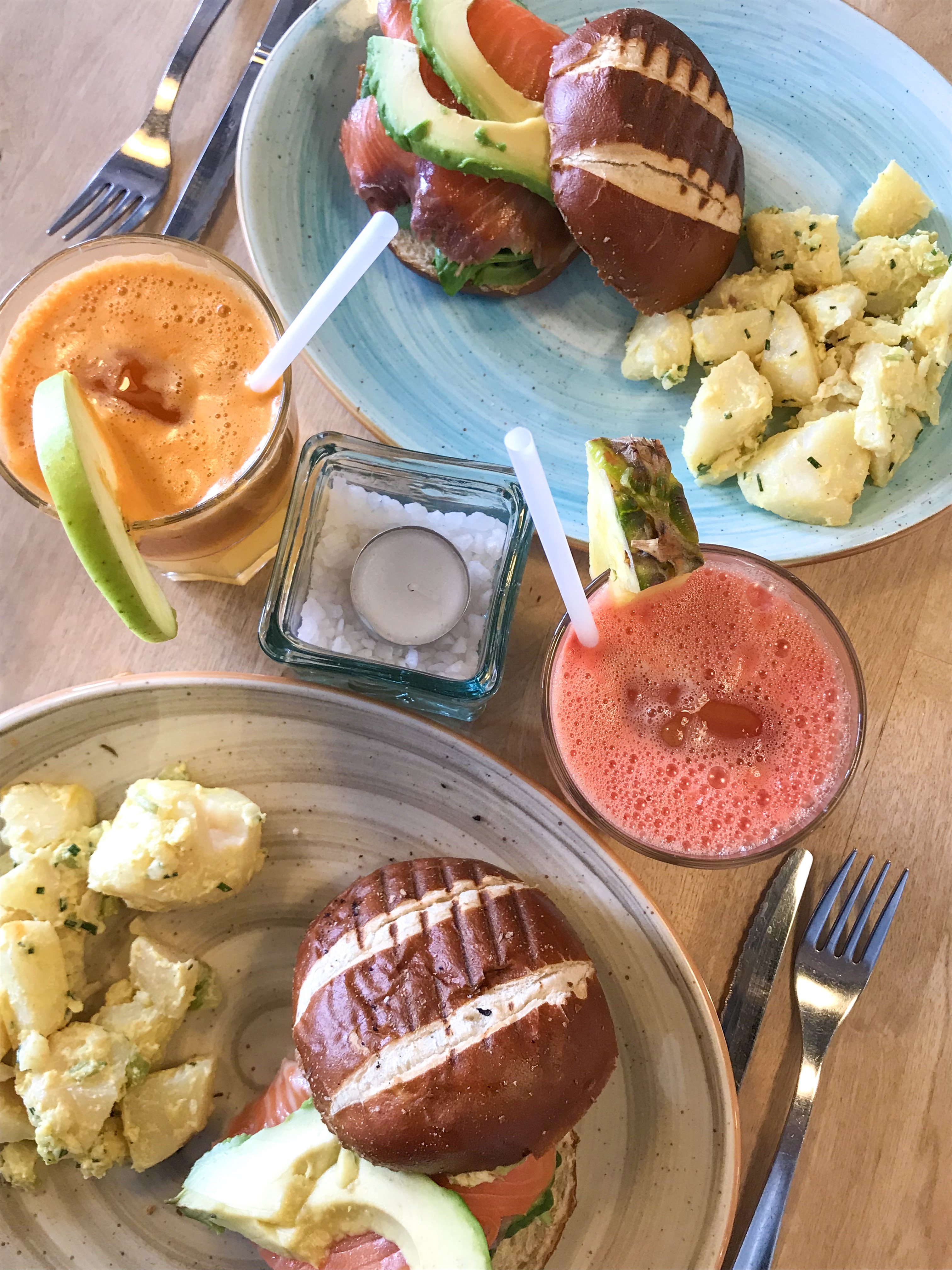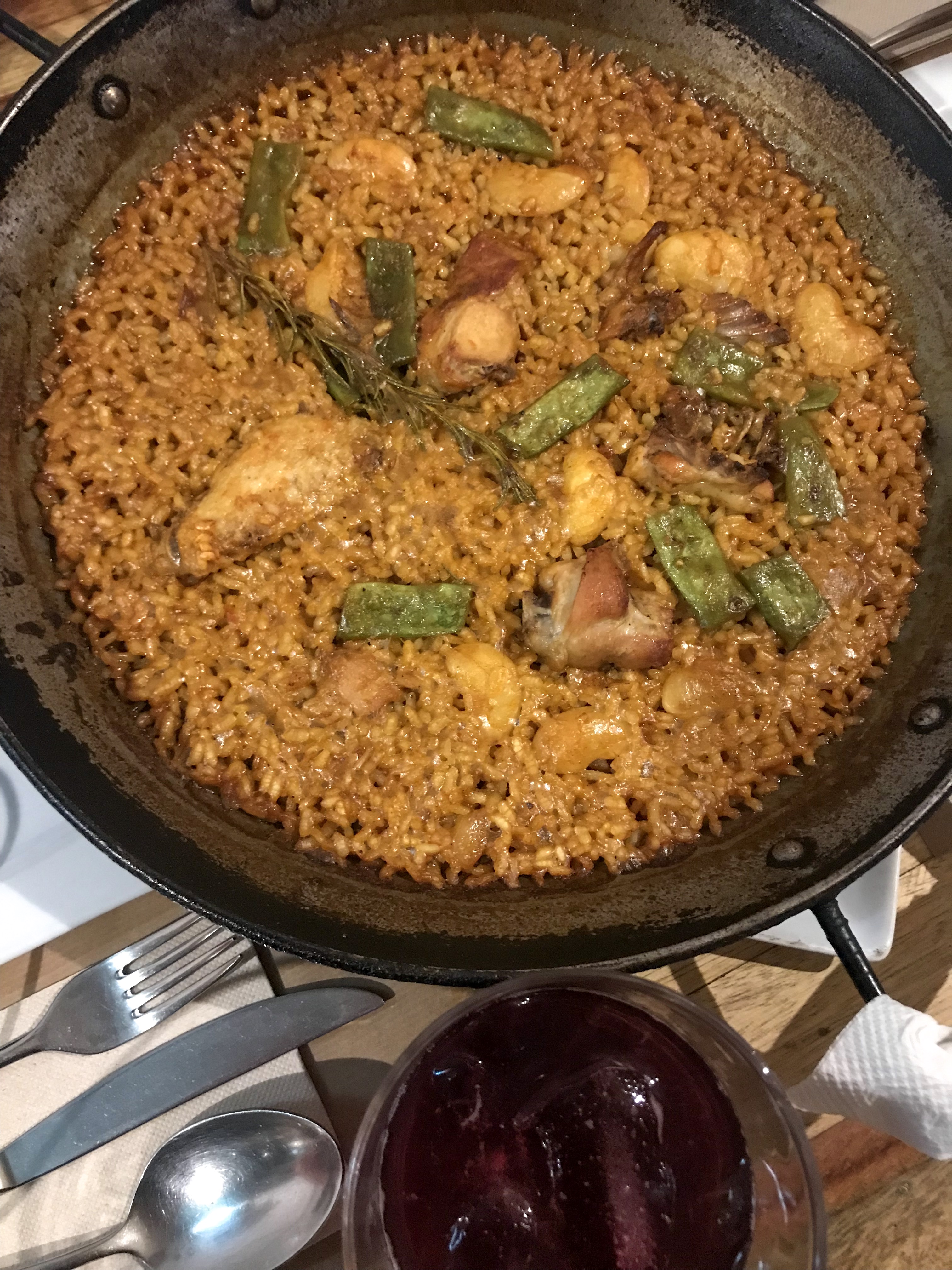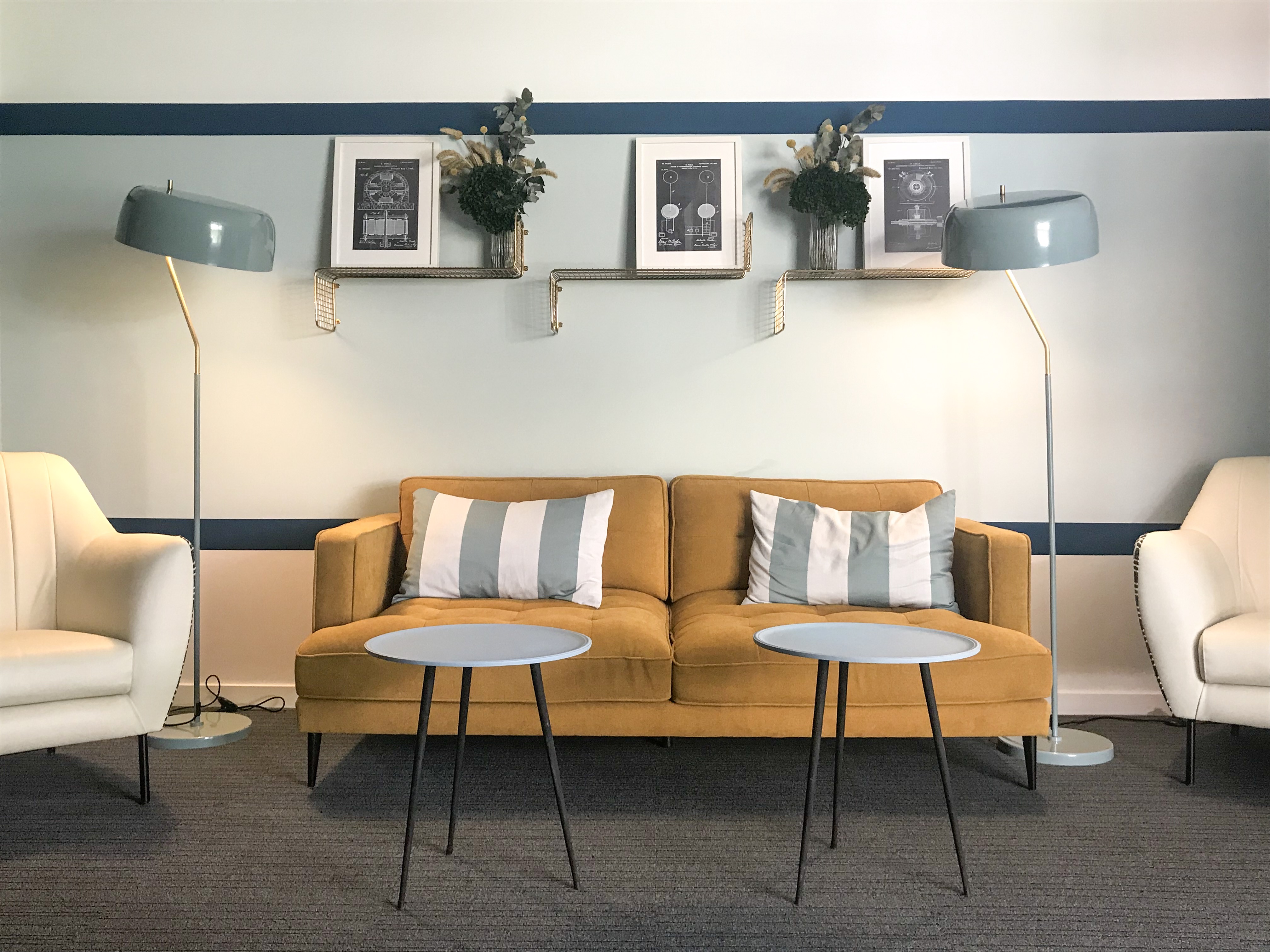Valencia is the perfect city for a weekend getaway. From its historic center to the most modern part of the city, Valencia is full of ambiance and charm. I feel like three days is the perfect amount of time to visit Valencia’s highlights, experience its lifestyle and spend some time at the beach. The city is easy to navigate, so you can easily visit a lot in a short period of time. So, keep reading to find out all you need to know to spend three amazing days in Valencia,
Sightseeing
Marvel at the architecture of the CIUDAD DE LAS ARTES Y CIENCIAS
If there is one landmark that you can’t miss while you’re in Valencia, it’s the City of Arts & Science! This collection of ultramodern buildings were built by the architects Santiago Calatrava and Félix Candela over a period of twenty years. The complex consists out of six parts: the Hemisfèric IMAX Cinema that screens digital films; the Umbracle landscaped area with plants and flowers from the Valencia region; the Príncipe Felipe Science Museum, an interactive science museum; the Reina Sofía Opera House, the Agora concert space and the Oceanogràfic aquarium; Europe’s biggest aquarium.
If you would like to visit these attractions you can purchase several combo tickets upon the website. We only visited L’Umbracle (flowergirls you know), which is free to enter. But even if you do not visit any of the attractions, do visit the area. I loved walking around there, taking pictures of the impressive buildings and enjoy the relaxing atmosphere near the waterside.
Bike through the Turia Gardens
A fun way to explore the Turia Gardens is by bike. These gardens are located in the former riverbed of the Turia River. After a catastrophic flood in 1957, the river was drained and rerouted. The 9km park stretches all around the city center of Valencia. We only saw a small part of it, but this is a very popular hangout spot for both tourists and locals.
EXPLORE the RUZAFA neighboorhood
Ruzafa is the trendy and hipster area of Valencia. This part of town is where you will find galleries and artist’s workshops, stylish boutiques and craft shop. . This is the perfect area to get lost in and wander aimlessly around. At night Ruzafa comes alive! The ‘Calle Sueca’ and surrounding streets are filled with good restaurants, cozy terraces and bars.
Ruzafa is also where you can find Valencia’s Bullring. While I get that bullfighting is a large part of Spanish culture, I would never watch it, because I just don’t enjoy a bull getting killed. However from an architectural perspective the building itself, was kind of impressive. The exterior design was inspired by Roman architecture and built in the neoclassical style.
Across the street you will see another remarkable building; El Estacion Del Norte. And believe me Valencia’s railway station is really worth a visiting. The exterior of the station is lovely decorated with flowers, oranges and orange blossoms. Inside the station the beautiful trencadís (mosaics) will draw your attention.
Get fresh food at the Central Market
The Mercado Central is a must-see while visiting Valencia. It’s located in a gorgeous modernist building in the Old Town. The market is divided into sections consisting of meats, fish, cheese, fruits, vegetables, and more! The central market is also a great place to grab a quick and cheap breakfast. They are selling fresh fruit in containers, juices and baked goods, which are super easy to grab with you on the go.
Explore Valencia’s Old Town
My favorite part of Valencia was the old town. It’s a maze of historic buildings, palm tree-lined streets and majestic squares. You can easily spend a day just roaming the streets, discovering one beautiful corner after the other.
La Lonja de la Seda is one of the most impressive buildings in Valencia’s old town. It was built between 1482 and 1533 and was mainly used for the silk trade (hence its name). The beautiful gothic building shows off the power and wealth of a major Mediterranean mercantile city in the 15th and 16th centuries. In 1996, UNESCO, considered this monument a World Heritage Site, so it’s really worth a visit.
Located in Lope de Vega Square, is La Estrecha, Europe’s narrowest building. Make sure not to miss it, because with it 107 cm wide it’s easy to walk by!
Around the corner you will find the lively Plaza de la Reina. The square is dominated by the Cathedral of Valencia, which was originally built on the site of a mosque in 1262. The Valencia Cathedral is one of the more prominent landmarks within the city mostly because it is home to the Holy Grail. The Holy Grail is the cup that Jesus was said to drink out of during the last supper, however, a few other places in the world hold the same claim. It is unknown which place holds the true Holy Grail or even if one exists but visiting it and viewing it behind its glass case is an experience in its own, especially if you are of religious following.
From the clock tower, El Micalet, you have the most beautiful views over the city. That is if you don’t mind climbing the 207 steps.
Behind the cathedral lays Barrio del Carmen, famous for the its many cafes and restaurants. If there is a charismatic street in the neighborhood that you can’t miss it would be the Calle Caballeros. Valencia’s bar street ends upon Plaza de la Virgin, the city’s most beautiful square. Plaza de la Virgen is located on the site that once was the forum of Roman Valencia. It is surrounded by impressive, historical buildings such as the Basilica Nuestra Señora de los Desamparados and the Gothic Palau de la Generalitat, the seat of government for the Valencia region. In the middle of the square is a fabulous fountain which represents the irrigation of the Turia River.
Another landmark in the Old Town, that should be on your to do list is the Torres de Serranos, one of Valencia’s old city gates. Rumour has it that you can enjoy splendid views of the city and the river Turia from its terraces, but unfortunately we were too late to visit.
Wander around the residential area of El Cabanyal
The ‘El Cabanyal’ neighborhood is one of the most charming parts of Valencia! This old fishermen’s quarter used to be a separate part of the city that had to be constantly rebuilt after multiple floods and fires. Since the end of the 19th century, El Cabanyal officially became a part of the city of Valencia. In the period between 1880 and 1940 beautiful Art Nouveau and Art Deco houses were built, from which we can still see a lot today. The colorful tiles, used to decorate the facades are what make the houses truly special! The best way to discover El Cabanyal is to get lost in its street and enjoy the colorful houses. We spotted very pretty ones in the Calle de la Reina, Calle Rosario, Carrer Barraca, Carrer Progres and Carrer Padre Luis Navorra, so you might wanna’ check these ones out!
CHILLAX AT THE MARINA BEACH CLUB
The fun thing about visiting Valencia in summer is the proximity to La Malvarrosa Beach. It can get super-hot during the day, so it’s nice to take a break from sightseeing and relax at the beach. At the Marina Beach Club you can either rent a bed at the beach or at the infinity pool. We went for the last option and really enjoyed our time there. The beds are super comfy and thanks to the music that’s playing, there is a nice ambiance too! Entrance is about € 30,00 per person. This includes entrance fee, sun bed and a € 10 spending budget in the bar. There is also a € 15 warranty for the use of towels, which will be refunded later when you return them. This unless you spend it in the bar, which is what we did! Damn those cocktails! But hey so worth it! 😉 It’s also possible to order some food, while you are chilling on the beds. On the menu you will find plenty of finger food, several burgers and sandwiches. For the more elaborate kitchen you should go to the Marina or El Portret restaurants. We didn’t eat here, so I really can’t speak on the food, but the restaurants looked very inviting! At night the Marina Beach Club turns into a disco, so this is also where you need to be if you like to party.
Foodie Hotspots
Valencia is the undisputed home of paella! The region’s climate is perfect for growing rice and Valencians have enjoyed paella for centuries. Turns out that there was a lot to learn about the famous dishes, like the fact that there is no chorizo and seafood in paella! Both ingredients were later additions to please tourists. The ingredients in the traditional Valencian paella are the things that farmers in the rice fields could easily get a hold of: like white and green beans, chicken, rabbit and sometimes even snails (luckily not in ours though).
The pintxos bar is one of the most symbolic elements of Spanish gastronomic culture. As per tradition you choose the pintxos you like best at the bar and collect the sticks so the waiters later know how many pintxos you had.
Breakfast, Lunch & Coffee spots
Dulce de Leche – one of the most popular places in Valencia for breakfast and brunch, but the thing that they are most famous for is their large selection of homemade cakes and pies! The displays are filled with them, and everything looked so delicious.
La Horchateria Santa Catalin – the place to be if you want to try a traditional ‘Horchata’. This local, milky drink is made from water, sugar and tiger nuts. With that you have to order a ‘Farton’, a thin pastry with sugar. At first the beverage tasted a bit funny, because it was different from everything else we tasted before, but it’s actually very nice and refreshing.
La Mas Bonita – one of my absolute favorite spots in Valencia! There are three restaurants in Valencia (Patacona, Ruzafa and Salvatierra) from La Mas Bonita. The Ruzafa location is perfect for a quick coffee and cake while exploring the Ruzafa neighborhood. For the Patacona location you have to go all the way to the end of Patacona Beach. The entire boulevard is filled with traditional restaurants, so La Mas Bonita really stands out thanks to its lovely colors and decor. It’s a charming venue for breakfast, brunch, tapas and delicious cocktails in the sun. La Mas Bonita Patacona is super popular and when we went there for brunch, both terraces were already full. Luckily we managed to get a table inside, because the food and fresh juices were too good to be true! In front of the Patacona restaurant there is also a chiringuito (beach bar) on the sand itself. We rented a sun bed and umbrella and enjoyed a quiet afternoon at the beach, while sipping on La Mas Bonita’s yummy juices.
Dinner
El Rodamon De Russafa – according to my friends Sven & Thierry (practically locals) one of the best places in town for tapas. And honestly I couldn’t agree more! El Rodamon de Russafa is a modern and vibrant restaurant with the friendliest staff. The chef selected his favorite dishes from all around the world and gave a Valencian twist to it. This creating some very interesting, but yummy choices!
Sagardi – the place to be in Valencia for delicious pintxos. The restaurant is also super with both tourists and locals alike, so you might have to wait a bit to get a table. But it’s absolutely worth it!
Mattilda – a hip and cozy restaurant in the old town, known for its delicious paella. Make sure to reserve your table!
Where to stay?
During our Valencia trip we stayed at Hotel Valencia Alameda, which is located across the street from the City of Arts & Science and the Turia Park. The hotel was recently renovated and had a very modern feel. The guest rooms were spacious and very comfortable. As we requested two single beds, we were offered us an upgrade to a Family Room, with two doubles instead! Hooray!
Practical Information
• Valencia Airport is located 8 kilometers west of Valencia city. You can easily get to the city center by taxi or via public transportation: By metro, via Line 3 (red) and Line 5 (green) or via metropolitan bus line 150, also known as the Airport Metrobus. Travel time to the city center is about 25 minutes.
• Currency: Euro (€)
